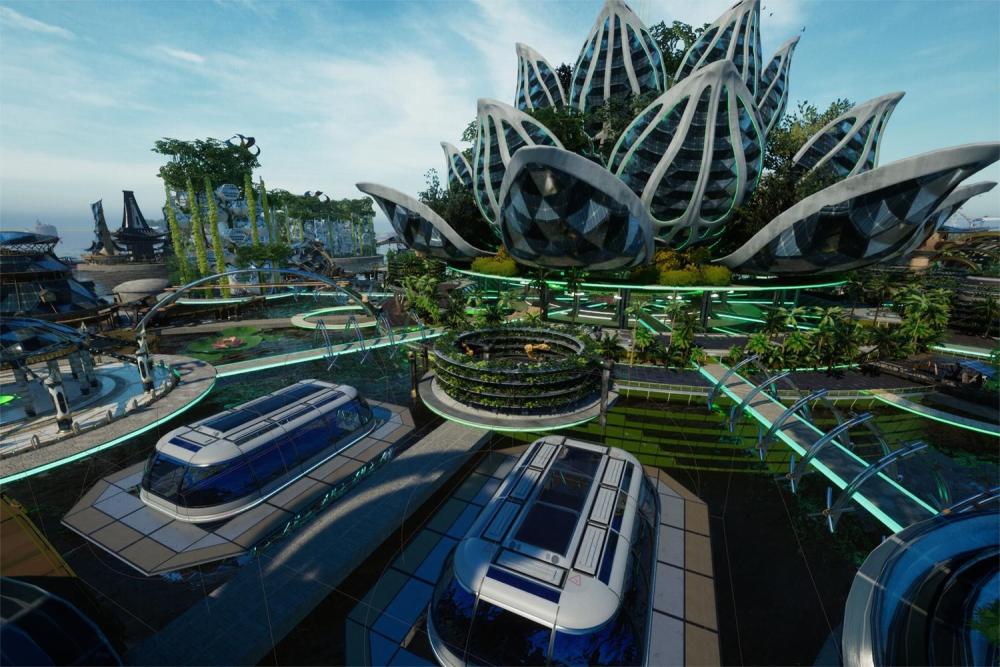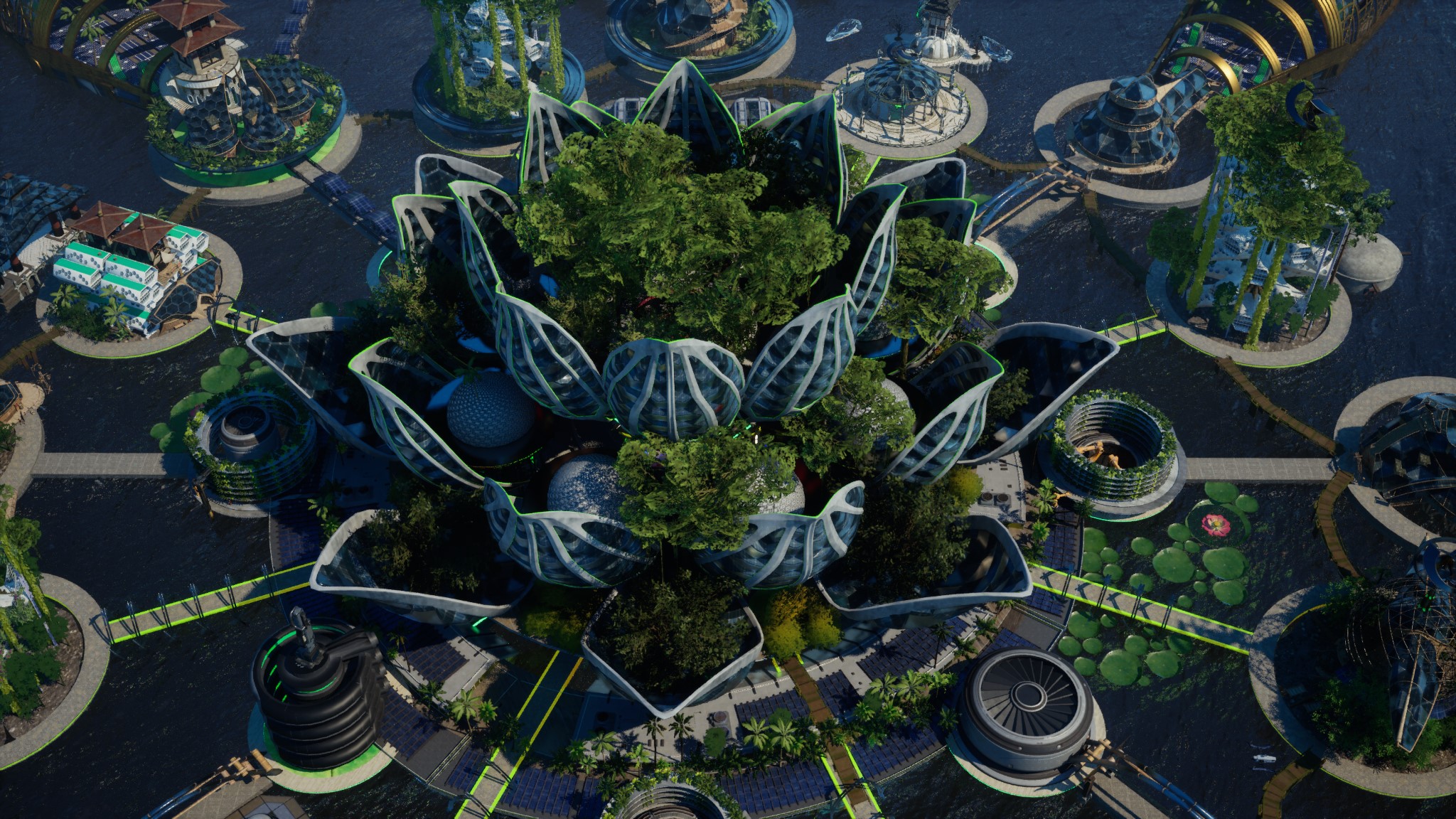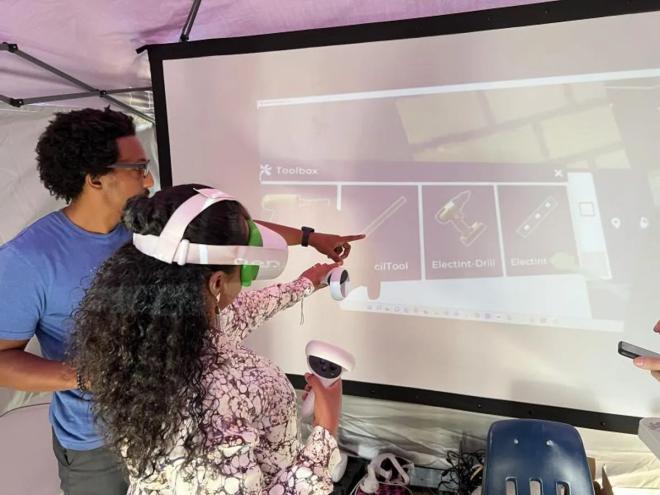
This article is published in collaboration with The MeshMinds Foundation.
Just off the coast of Singapore, a city floats, created in response to the threat of rising seas in the region, defying conventional norms, and seamlessly blending creativity, technology, as well as sustainability. Welcome to Aquasia.
Aquasia is a model of urban living, where conventional notions of farming and energy production are reimagined, where the boundaries between human habitat and nature blur harmoniously.
Energy is harnessed with a keen eye on sustainability, and renewable sources have been meticulously integrated into every facet of the city's infrastructure.
And what about transportation, that vital artery of human interaction? In Aquasia, it takes on a whole new dimension. Aquabuses glide through waterways, providing efficient and eco-friendly connectivity. Aquabikes zip through the city, offering a blend of exercise and commute.
At the heart of this solarpunk utopia, technology is not just a tool for survival, but a beacon of hope, illuminating a future where humanity thrives amidst the challenges of a changing climate.
This is the essence of the solarpunk movement, a utopian art movement that imagines the cultivation of human activities and progressive lifestyle that does not harm the environment. Beyond the solarpunk aesthetic of lifestyle and technology being integrated with nature, the movement offers a much more invaluable practice—imagining and envisaging a future that is green and sustainable.

Hopeful action versus despair
With climate change posing as an imminent threat, how can humanity aspire to build a city like Aquasia in a manner that would entice hopeful action rather than despair?
In an article written for science magazine, Nautilus, Klaus Schwab, the founder and executive chairman of the World Economic Forum and Thierry Malleret, the managing partner of content platform, Monthly Barometer, touted the power of the imagination and storytelling in shaping humanity’s reality. “Narratives shape our perceptions, which form our realities and influence our choices.”
Few topics have garnered as much attention and urgency as sustainability. Climate action has become an imperative, and the need for collective responsibility has never been more pressing. While it is vital to share the stark realities and potential perils that the planet would face, there is also much benefit to illuminate the path of hope, demonstrating that the world is not irrevocably consigned to a grim fate.
With news headlines featuring climate-related disasters, it is no wonder climate anxiety is prevalent among the youth, as shared in the 2023 report from the Yale Program on Climate Change Communication. Much of the narrative around climate change has mostly echoed the apocalyptic trajectory of the planet, but what if the focus shifts to imagining a future where nature, humanity, and technology are in harmony.
In recent years, the landscape of emerging technology has undergone a transformative evolution, with virtual reality (VR) headsets and extended reality (XR) technology revolutionizing various industries. This shift opens up a realm of possibilities for reshaping narratives surrounding climate action. XR refers to immersive technologies, which include VR, augmented reality, and mixed reality.
Harnessing technology for positive change
The solarpunk movement and VR share a common ethos rooted in the belief that technology can be harnessed for positive change. Solarpunk envisions a future where renewable energy sources, community-oriented design, and sustainable practices flourish. XR, in turn, offers a means to vividly showcase this vision, allowing individuals to step into a world where these ideals are realized. Marrying the principles of solarpunk with the immersive capabilities of XR can create a potent combination that not only inspires but also empowers individuals to work toward a more sustainable reality.
One example comes from MeshMinds and animation studio Metamo Industries, with the creation of Aquasia, a virtual reality experience that transports individuals to an envisioned marine utopia. Through this immersive journey, Aquasia raises awareness about the dangers of rising sea level and highlights innovative solutions to help people adapt to environmental changes. This metaworld envisions technologies that aid the planet in regenerating and redefines humanity’s approach to food, renewable energy, and transportation systems, harmonizing lifestyles with nature.
A similar groundbreaking example can be found in Hollywood. Consider the amalgamation of the Marvel cinematic universe with a world where humans coexist harmoniously with nature, embracing technological advancements to prosper. This is seen in Black Panther, which illustrates the solarpunk ideals with its depiction of the uber modern and technologically advanced fictional kingdom of Wakanda, where the movie is set.

Going beyond virtual confines
Solarpunk-inspired XR experiences have gone beyond the virtual confines. A notable instance is the collaboration between Key Tech Labs, Weed Warriors, and New Start Community Garden in Burien, Washington. Together, they have merged technology and green education, transforming a community garden into an outdoor learning space for underprivileged communities in Seattle. From teaching students how to utilize a robot for planting and cultivating crops, to creating a VR app that imparts knowledge on installing solar panels, Key Tech Labs is contributing to the creation of self-sustaining communities by making immersive education accessible.
The dynamic intersection of solarpunk ideals and XR illuminates the path toward a sustainable future. As emerging technologies continue their transformative journey, the potential for reshaping narratives surrounding climate action grows exponentially. VR experiences like Aquasia and the solarpunk wonders of Wakanda, highlight the power of imagination and innovation in driving positive change. Yet, the true impact lies not only in these virtual realms but in the real-world actions they inspire.
As we navigate the uncharted waters of a changing climate and a rapidly evolving technological landscape, let us remember that our narratives are not predetermined. We possess the agency to reshape them, using traditional and emerging technologies to illuminate the path of hope and inspire meaningful climate action. The future is not fixed; it is a canvas upon which we can paint our collective aspirations for a sustainable, harmonious world. By shifting the narrative, we can set a course toward a brighter tomorrow—one where the stories we tell ourselves propel us toward a future where humanity thrives in harmony with our planet.
 Justinne Alethea Casuga
Justinne Alethea Casuga
Chief Storyteller, MeshMinds
As chief storyteller at MeshMinds, Justinne Alethea Casuga believes in the power of narratives to drive empathy, inspire action and foster a positive impact for people and the planet. Her interests in art, design, and technology has led her to explore the exciting realm of digital storytelling to engage audiences in new and meaningful ways.
 Kay Poh Gek Vasey
Kay Poh Gek Vasey
Founder, MeshMinds Foundation; Chief Connecting Officer, MeshMinds
Kay Poh Gek Vasey is the chief connecting officer at MeshMinds, which operates as a creative technology studio. Vasey offers expertise and advocacy on XR creation and production; metaverse pedagogy; digital sustainability; digital transformation; and the future of art and creativity. She believes in the power of artists to inform conversations and inspire positive actions that result in measurable impact for a better world.


